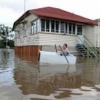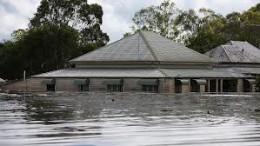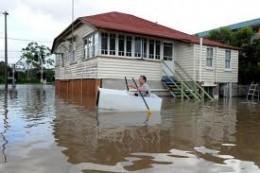
Tips For Building or Rebuilding in Flood Zones - Part 2
By Empire Design & Drafting|March 27, 2013
Continued from Part 1: http://www.homeone.com.au/articles/drafting/tips_for_building_or_rebuilding_in_flood_zones_part_1
The first step is to download a free flood level map (for those in the Brisbane area please see flood level map), as well as getting a FloodWise Property Report for your property. Other things to consider are the flood implications when making improvements or additions to your property, installing or upgrading your property's drainage systems and installing new electricity outlets and switches above flood levels.
Some last areas of consideration when either building in a flood zone or preparing your existing home to the possibility of a flood are the possibility of raising the height of your house, rebuilding or modifying your house to meet new standards, restoring or replacing a private pontoon, restoring your swimming pool, hazardous waste and asbestos removal and noise restrictions when building.
For those of you in the Brisbane area, the Brisbane City Council has moved quickly to give confidence to residents wanting to rebuild or build in flood-affected suburbs after the January 2011 Brisbane River flood. Following advice from the Joint Flood Taskforce, Council has put in place interim flood levels and standards. The Temporary Local Planning Instrument (TLPI) 01/11 - Brisbane Interim Flood Response was effective from 16 May 2011 but has now been replaced by TLPI 01/12 which will be effective until 15 May 2013. Basically, the TLPI is an interim response that gives confidence to those building or rebuilding after the flood and enables longer term planning provision to be shaped while it is in effect. For a guide on building and rebuilding after the Brisbane floods, the Council has put in place a Temporary Local Planning Instrument (TLPI) 01/12 - Brisbane Interim Flood Response for flood-affected areas of Brisbane.
As a last point of review, it is essential to take into consideration the fact that development has made our landscapes less able to absorb rainfall. We have taken away all the absorptive capacity of our landscapes. Adapting to climate change will require making our buildings more resilient to storms and flooding. We should prepare ourselves for rising sea levels and as such, limit the damage done to our buildings and home when a natural disaster does strike.


The first step is to download a free flood level map (for those in the Brisbane area please see flood level map), as well as getting a FloodWise Property Report for your property. Other things to consider are the flood implications when making improvements or additions to your property, installing or upgrading your property's drainage systems and installing new electricity outlets and switches above flood levels.
Some last areas of consideration when either building in a flood zone or preparing your existing home to the possibility of a flood are the possibility of raising the height of your house, rebuilding or modifying your house to meet new standards, restoring or replacing a private pontoon, restoring your swimming pool, hazardous waste and asbestos removal and noise restrictions when building.
For those of you in the Brisbane area, the Brisbane City Council has moved quickly to give confidence to residents wanting to rebuild or build in flood-affected suburbs after the January 2011 Brisbane River flood. Following advice from the Joint Flood Taskforce, Council has put in place interim flood levels and standards. The Temporary Local Planning Instrument (TLPI) 01/11 - Brisbane Interim Flood Response was effective from 16 May 2011 but has now been replaced by TLPI 01/12 which will be effective until 15 May 2013. Basically, the TLPI is an interim response that gives confidence to those building or rebuilding after the flood and enables longer term planning provision to be shaped while it is in effect. For a guide on building and rebuilding after the Brisbane floods, the Council has put in place a Temporary Local Planning Instrument (TLPI) 01/12 - Brisbane Interim Flood Response for flood-affected areas of Brisbane.
As a last point of review, it is essential to take into consideration the fact that development has made our landscapes less able to absorb rainfall. We have taken away all the absorptive capacity of our landscapes. Adapting to climate change will require making our buildings more resilient to storms and flooding. We should prepare ourselves for rising sea levels and as such, limit the damage done to our buildings and home when a natural disaster does strike.


